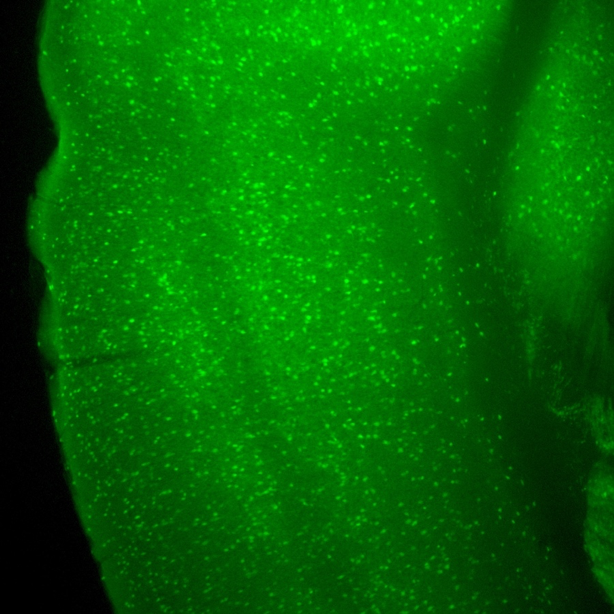FY2017 Annual Report
Brain Mechanisms for Behaviour Unit
Professor Gordon Arbuthnott

Abstract
A year of change. I remained the Dean of Faculty Affairs and saw the laboratory for only some Fridays. We welcomed Prof Louise Parr-Brownlie as a sabattical visitor. Dr Esther Lai arrived and she and Sandrine worked on cortex while Teresa began a new project. Marianela took over much of my administrative work in the Unit and we wrote papers for the IBAGS special edition of the European Journal of Neuroscience. We continued to work on papers from our recently departed Postdocs since both Violeta and Omar had left with ‘unfinished business’ in the form of at least three papers.
1. Staff
- Marianela Garcia Munoz, Group Leader
- Teresa Hernandaz Flores, Researcher
- Esther Suk King Lai, Staff Scientist
- Nilupaer Abudukeyoumu, OIST Graduate Student
- Bianca Sieveritz, OIST Graduate Student
- Yoko Nakano, Research Technician
- Hiroko Chinone, Research Administrator
- Theodoros Bouloumis, rotation Student
- Louise Parr-Brownlie, sabbatical visiting Professor
2. Collaborations
2.1 Description of cerebellar afferents to motor thalamus
- Type: Joint Research
- Researchers:
- Prof. Luoise Parr-Brownlie, University of Otago, New Zealand
- Nikki Guy, University of Otago, Dunedin, New Zealand performed research work for her MSc in the Unit
2.2 Activity of motor cortex in Parkinson’s disease
- Description: Manuscript in progress
- Type of collaboration: Joint research
- Researchers:
- Professor Wing Ho Yung, Chinese University of Hong Kong, China
2.3 Optical probe for deep brain recordings
- Description: Research work on optical probe by graduate student Simon Peter Mekhail
- Type: joint research
- Researchers:
- Prof. Sile Nic Chormaic, OIST Graduate University, Light-matter Interactions Unit.
3. Activities and Findings
3.1 Inhibitory actions in brain
Louise’s visit was in hope of continuing Nikki’s work but that did not happen in the end. She helped Esther settle in and worked with both students in the unit over her time here. We wrote many unsuccessful manuscripts but began to collect data from a new mouse strain with green fluorescent protein in all the neurons that make GAD67 an enzyme that makes the inhibitory transmitter GABA.
Figure 1. Cortex from GAD67 - mouse

These mice might give us direct data that suggest the sign of the basal ganglia return pathway to cortex should be negative after all! All the standard drawings have that part of the basal ganglia loop as excitatory. We need to collect more information but the suggestion has some consequences for the models of the basal ganglia.
Figure 2. Diagram of the prevalent model of basal ganglia connections

The red arrows represent excitatory pathways, The thalamocortical route goes to layer 1 where it most probably contacts the inhibitory neurons obvious in Figure 1. PPN-pedunculopontine nucleus; SNc substantia nigra pars reticulate; SNr substantis nigre pars reticulate; GPi globus pallidus interna; STN subthalamic nucleus; GPe globus pallidus externus.
3.2 Inputs to layer 1 of cortex
Meanwhile Ester worked hard to reproduce some data I had from the 1980’s in rat that suggested a group of layer 6 neurons in cortex should project to layer 1. After many tries we eventually decided that the methods we used in rat did not work in mouse and the pathway may not exist. However, we did find two other transgenic animals that should have the neurons of layer 6b labelled, and began the process of collecting them for our experiments. One is in OIST the other on the way. Hopefully, more later!
3.3 Striosomes again
Meanwhile Teresa was able to use the SEPW1 mouse that makes CRE in the striosomes to do the inverse of the experiments that Violeta had done and published last year. The striosomes should be unable to influence the matrix cells and vice versa, but they should communicate with each other. Those results should have been easier to get but, the staining of the animals was not straightforward at all. So far, the predictions from Violeta’s experiments are holding up strongly.
4. Publications
4.1 Journals
- Li, Q., Ko, H., Qian, Z.M., Yan, L.Y.C., Chan, D.C.W., Arbuthnott, G., Ke, Y. & Yung, W.H. (2017) Refinement of learned skilled movement representation in motor cortex deep output layer. Nat Commun, 8, 15834.
- Mekhail, S. P., Abudukeyoumu, N., Ward, J., Arbuthnott, G., Nic Chormaic, S. (2018). "Fiber-bundle-basis sparse reconstruction for high resolution wide-field microendoscopy." Biomedical Optics Express 9(4): 1843.
4.2 Books and other one-time publications
Nothing to report
4.3 Oral and Poster Presentations
- Gordon Arbuthnott (2017) How many motor systems are there? How many do we need? 12th Biennial Conference of the Chinese Neuroscience Society Tianjin, China, October 12-15, 2017
- Gordon Arbuthnott (2017) Could Parkinson’s disease symptoms depend on a cortical malfunction? Medicine in 21st century: Konkuk University, Korea, November 15, 2017
5. Intellectual Property Rights and Other Specific Achievements
Nothing to report
6. Meetings and Events
6.1 Sabbatical Visitor
- Professor Louise Parr-Brownlie from Otago, New Zealand. 12th July -14th December.
6.2 Seminar: Human Mini-Midbrain in a dish: Parkinson’s disease modeling
- Date: February 5th 2018, Okinawa, Japan.
- Venue: OIST Campus Lab.1
- Speaker: Dr Junghyun Jo (Genome Institute of Singapore (GIS) A*STAR)
7. Other
Nothing to report.



